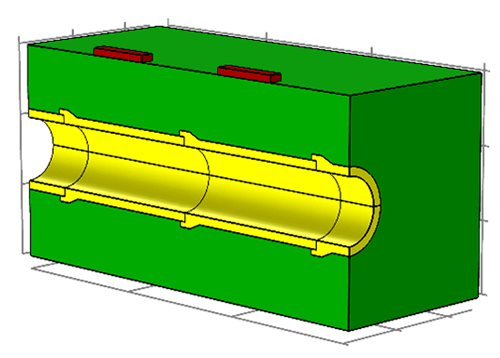A digital twin (DT) is a virtual replica of a physical process or system that is dynamically updated using data collected from real-time monitoring of its physical counterpart. Our facilities at NBIF are designed to enable researchers to develop DTs and physical models of civil engineering infrastructure, enabling them to study the impacts of various external and environmental conditions on their sustainability and resilience.
The benefits of Digital Twins
DTs offer enhanced simulation experience that allows users to carry out several activities such as system simulation, integration, testing, monitoring, optimisation, scenario prediction and maintenance that otherwise not readily available through standard numerical simulations.

DTs have been used to tackle a wide range of problems from healthcare to automotive as well as overcoming challenges in urban planning and construction industry. Often, in construction projects, DTs are integrated with Building Information Modelling (BIM) to use as a maintenance and operation tool. Additionally, they can be used to solve complex problems, using artificial intelligence, to improve system’s productivity

Best in class facilities
As well as our physical testing facilities (including large-scale and centrifuge modelling), our computational suite at NBIF benefits from access to local, regional and national computing facilitie. These include BlueBEAR, Baskerville Tier 2 HPC and Data & Analytics Facility for National Infrastructure (DAFNI).
The GUIDE (Ground and Underground Infrastructure Damage Evaluation) research project was recently completed at NFIF. The project demonstrated showed the usefulness of digital twinning in locating and condition assessment of buried pipes.
Discover more
Faramarzi, A., Alani, A. M., & Javadi, A. A. (2014). An EPR-based self-learning approach to material modelling. Computers & Structures, 137, 63-71.